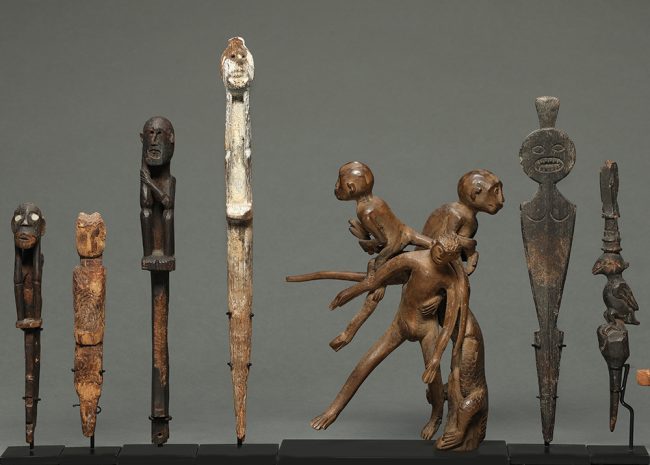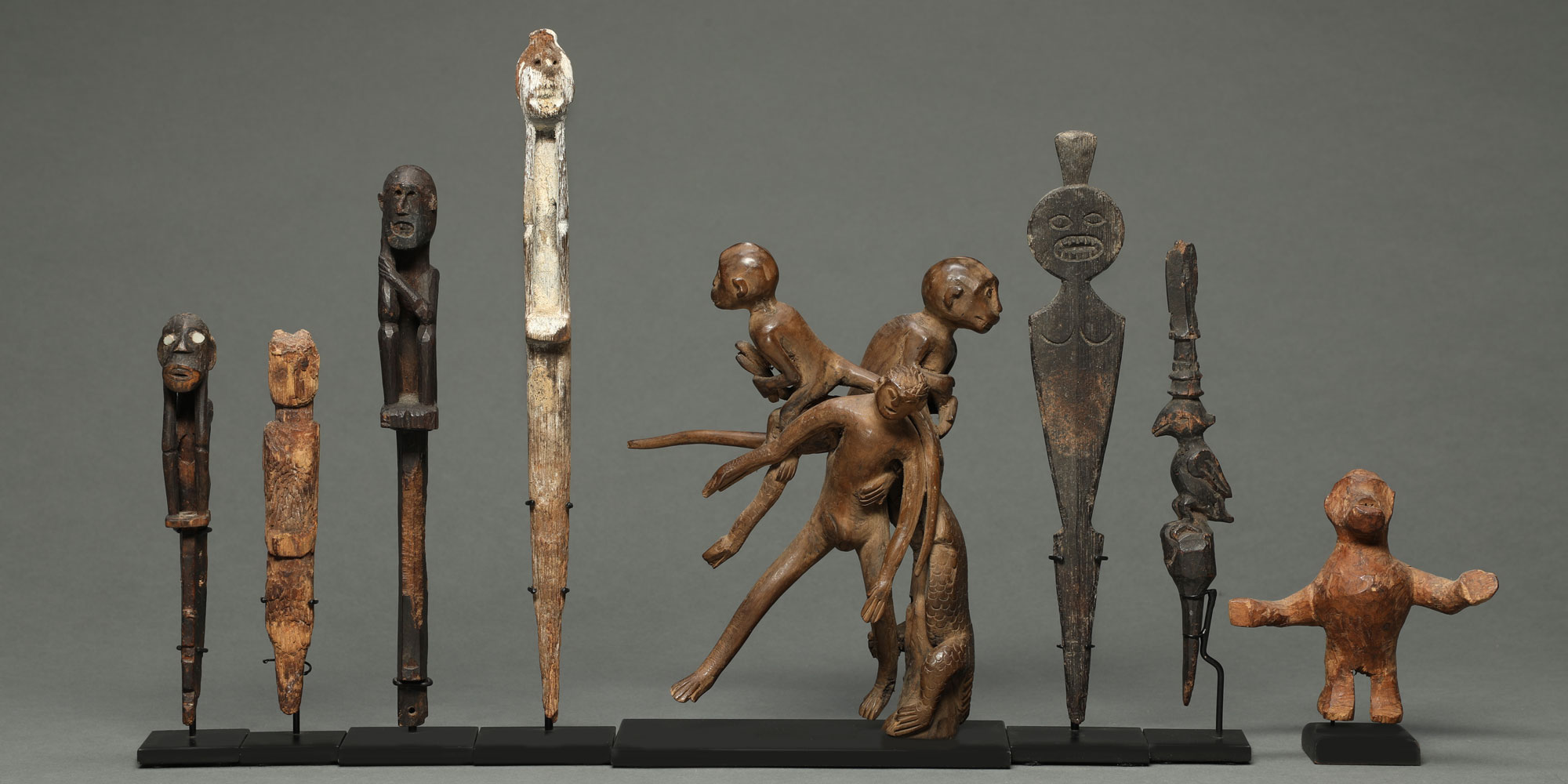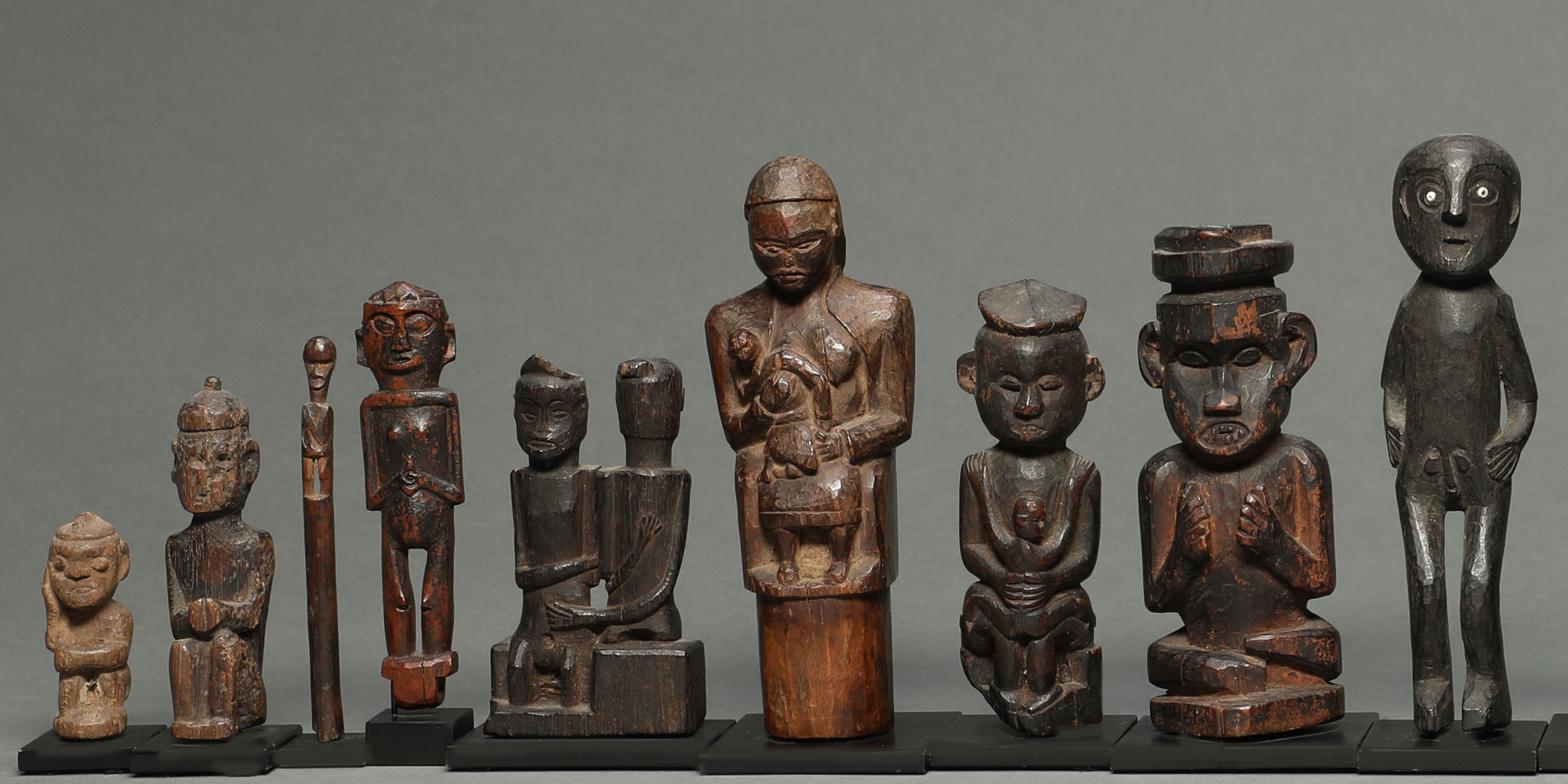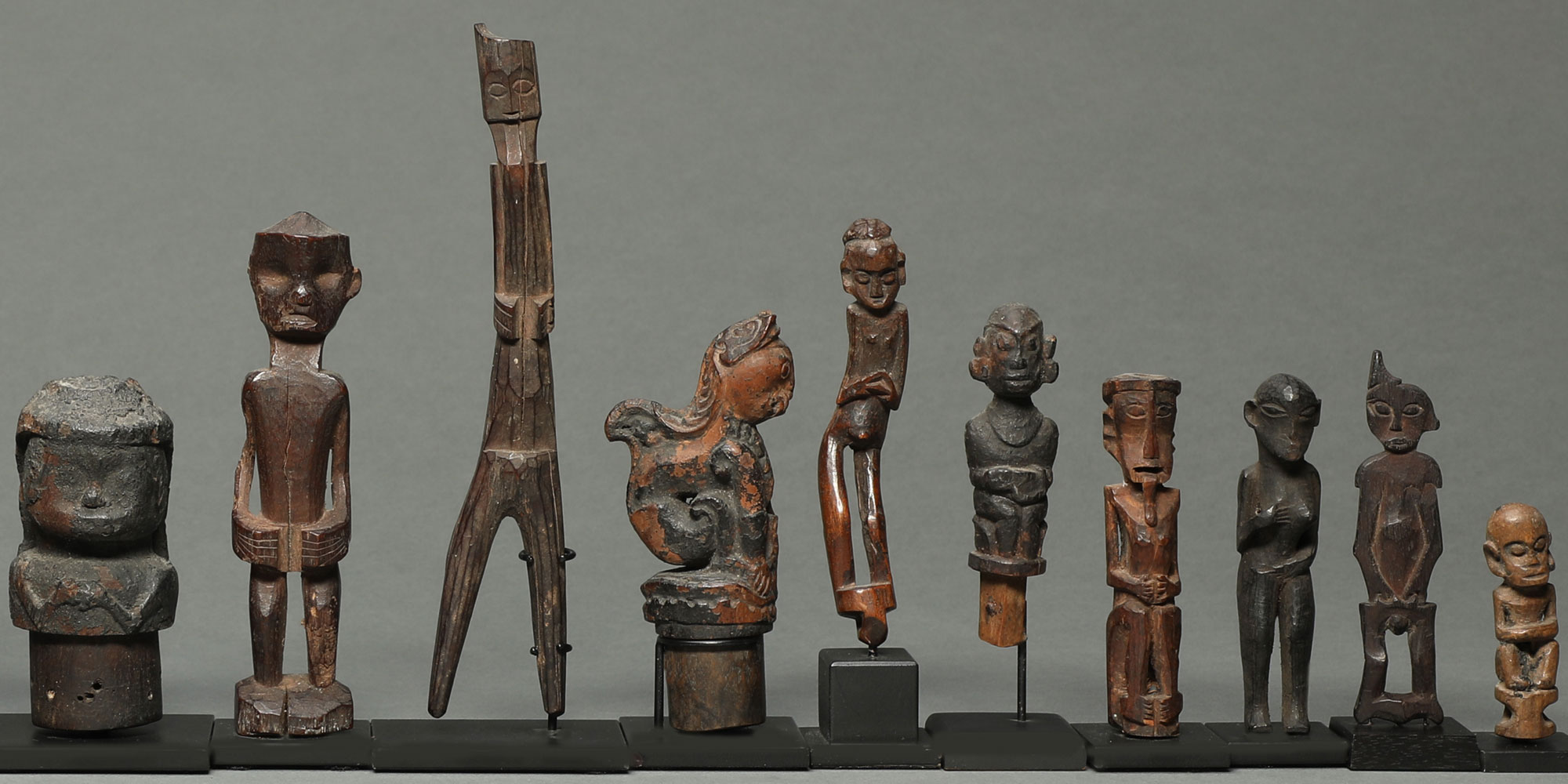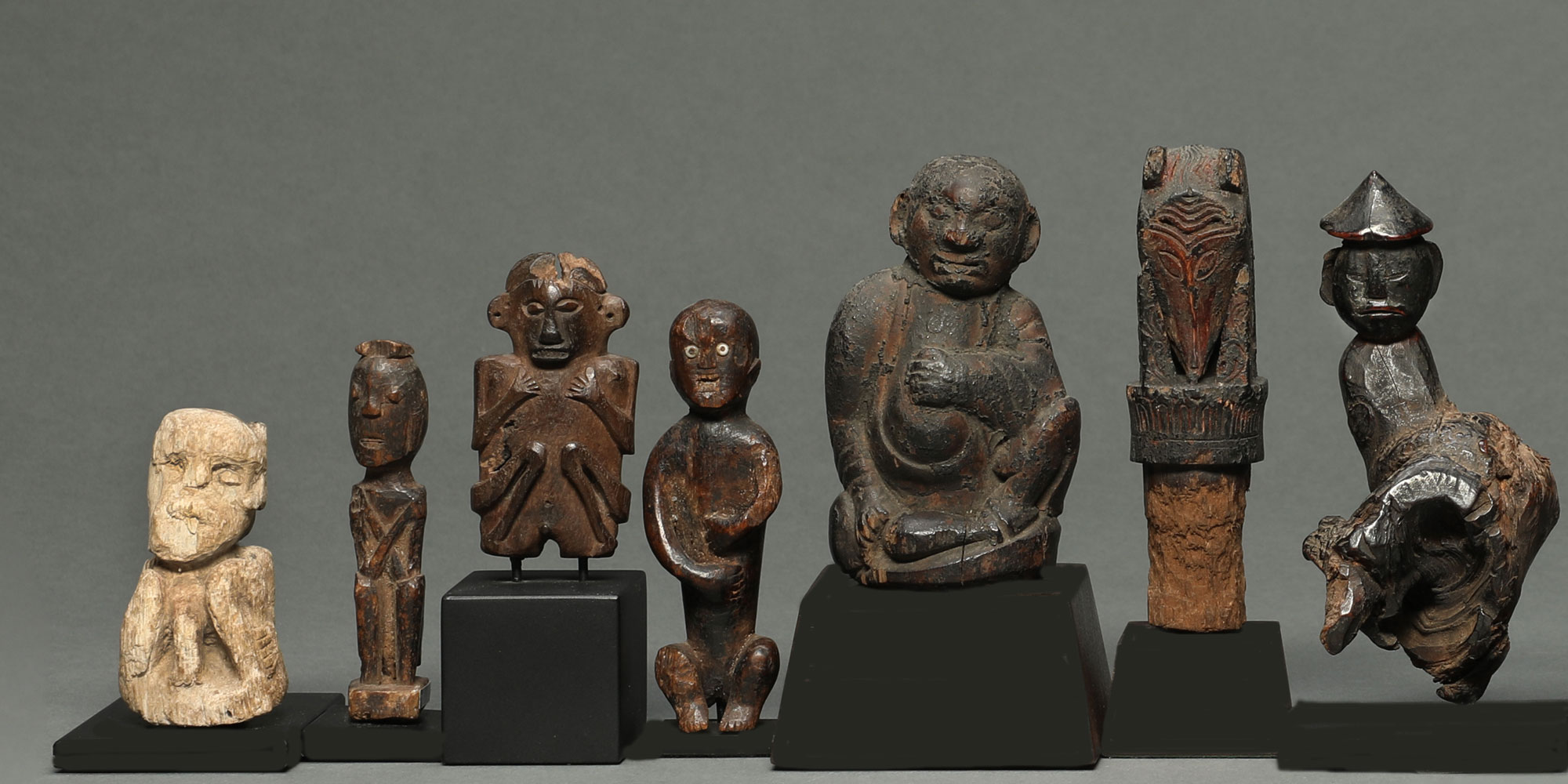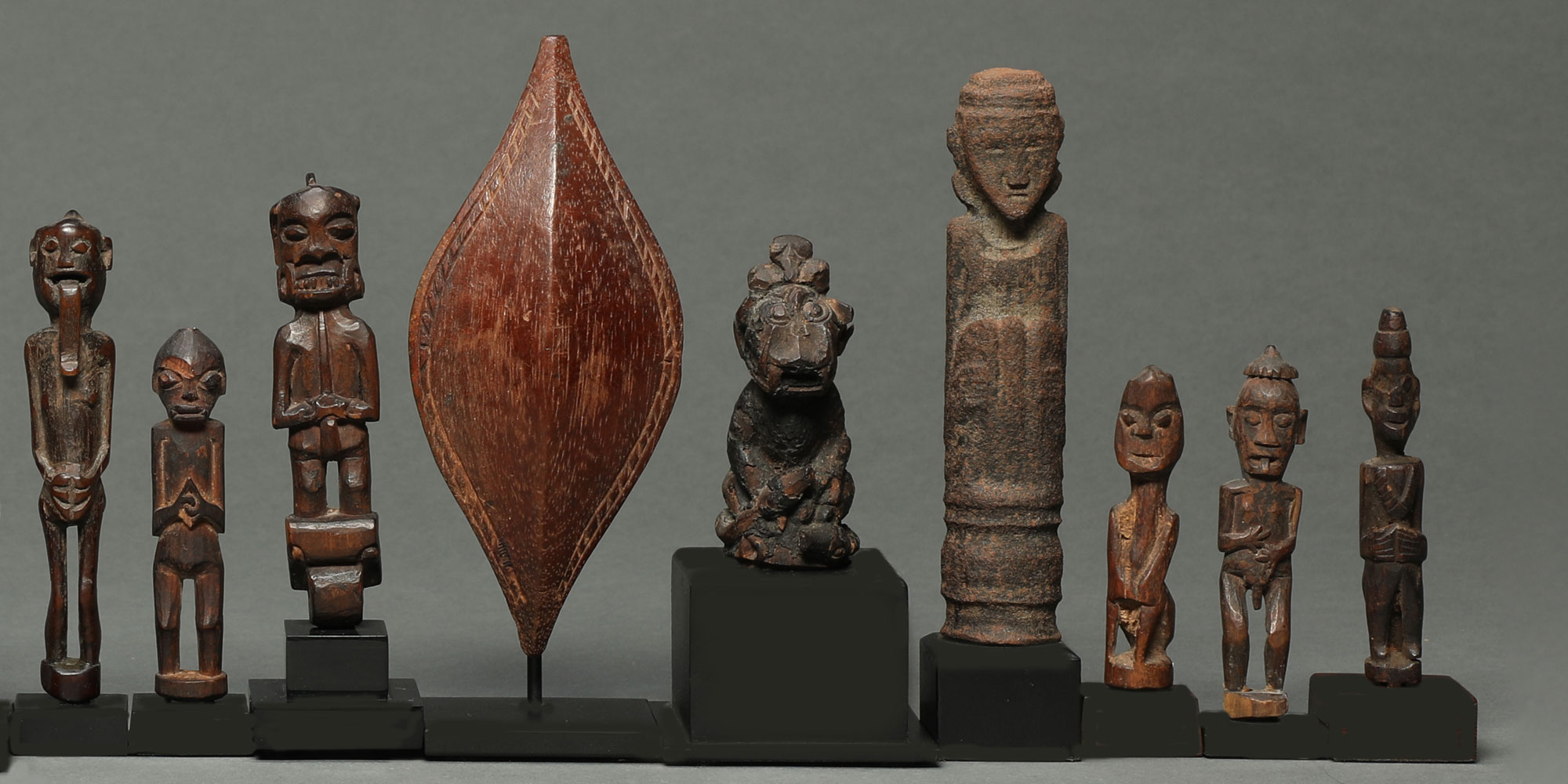Dayak Charms Collection
Dayak charms are a most fascinating subject. I am not sure if they captured me, or I captured them. Presented here is the result of more than forty years of collecting that I now wish to share with you.
Just looking at their great aesthetic variety is very compelling. But the more one knows about the cultural and historical context of Dayak charms, the greater their appreciation.
Borneo is the world’s third largest island, following Greenland and Papua New Guinea. It is politically divided by three nations: the largest territory being Kalimantan, of Indonesian; two states are part of Malaysia, Sarawak and Sabah; and the small but oil rich sultanate, Brunei. It is common to distinguish between the coastal inhabitants, including Malays, Javanese, Buginese, Chinese, and Arabs, and the indigenous peoples of the island’s interior. Collectively known as Dayak, these indigenous ethnic groups share in a multiplicity of Malayo-Polynesian dialects, a subset of the greater Austronesian language family extending from Madagascar to Easter Island.
The Dayaks include the Iban, Bidayuh, Kayan, Kenyah, Bahau, Ngaju, Ot Danum, Penan, Maloh, Barito, Kelabit-Lun Bawang, and Dusun-Kadazan-Murut, amongst many other sub-tribes. They have independent but at times overlapping cultural customs, social hierarchies, and pre-missionary religious belief systems. Animism is a belief that spirits inhabit stones, trees, mountains, rivers, plants and animals. There are gods that are good and help with bringing in a good harvest, for example. That said, there are also malevolent ghosts everywhere that can cause great trouble. Most of the time, such evil spirits may be kept at bay with powerful magic. All ethnic groups make use of protective charms.
The Dayak will often live in longhouses extending along mighty rivers or up in the highland forests. They hunt, fish, and practice slash and burn agriculture. Most, but not all, of the Dayak were feared headhunters. They were known for their tattoos, shields, masks, textiles, and beadwork.
Living in the deep rainforest, the Dayak are great sculptors. Surrounded by giant trees, they are known for carving guardian sculptures of grand scale, known as hampatong. These formidable figures can reach twelve or more feet (four meters) in height. Ancestral in nature, they stand in front of the longhouse defending against threats to the living by the dead.
But giant statues are but one of the sculpture traditions of the Dayak. It is in their miniature charms that Dayak carving genius truly presents itself. Humans take on all shapes, forms, and facial expressions, in a most compelling manner. We encounter totemic animals, birds, and a priest’s shield. Ranging in size from one inch to ten inches, ( 2.5- 25 cm) such amulets were known to ward off evil spirits and malevolent ghosts. They were used on baby carriers to protect the child; placed in rice paddies to encourage growth; worn on necklaces by shamans; used for hunting magic; served as medicine for healing; were tops to bamboo ritual containers; and were present during rituals of birth, puberty, marriage, and funerals, where malevolent ghosts need be kept at a distance.
Charms can be sculpted from wood, bone, horn, stone and metal to name but a few materials. We encounter great creativity in amulets fashioned from found objects; a root complex lends itself to wild flights of fancy. The sheer variety of facial expressions, often with humor or angst, makes each charm enchanting.


